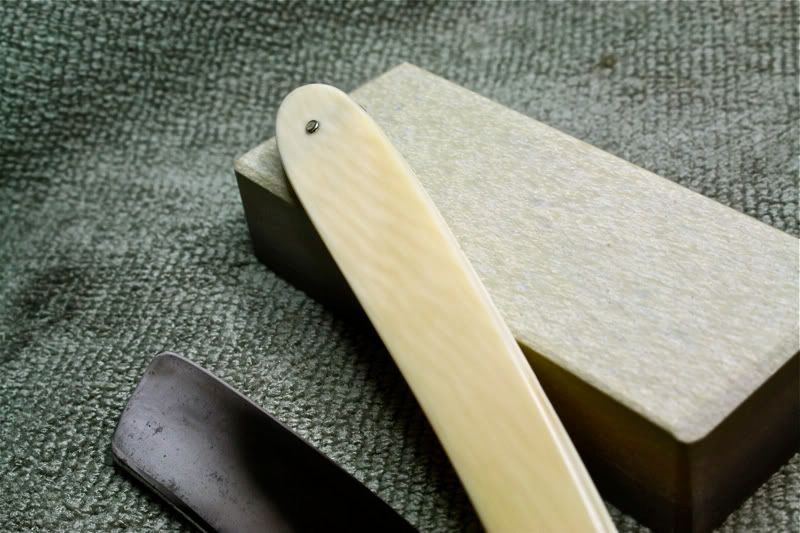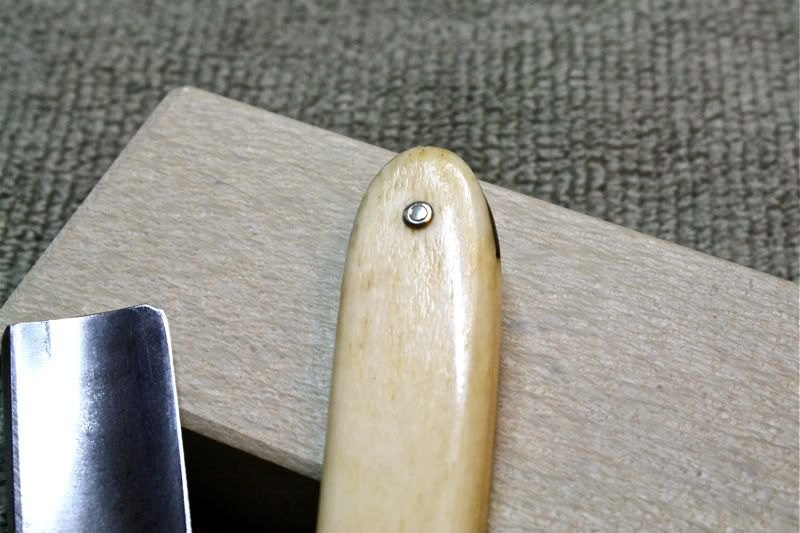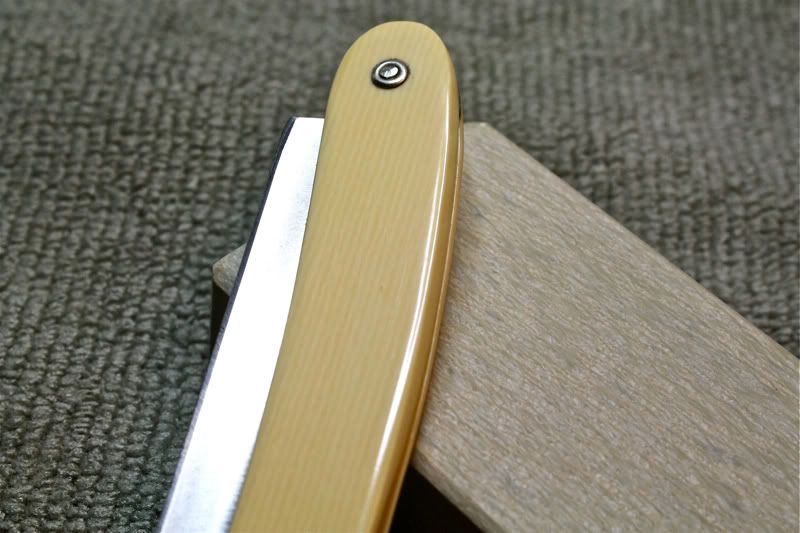Results 1 to 10 of 14
Thread: henckles ivory tang
Hybrid View
-
10-20-2009, 12:52 AM #1Senior Member


- Join Date
- Oct 2008
- Location
- Munford TN
- Posts
- 436
Thanked: 46 henckles ivory tang
henckles ivory tang
i was wondering if anyone knows if henckles made a tang with an ivory overlay on it. i found 2 today that where of a yellowish color. just not sure if htey even made one. please if anyone has any info on these i would like to know and if anyone can tell me a ball park for them, i know condition and so one i was just looking for a genral eximate. the reason why is that they are only going for about 20 bucks each. thanks guys
-
10-20-2009, 12:55 AM #2

I say if they are in decent condition buy them, Henckles are great shavers. There was a seven day set on Ebay that also had ivory tangs not long ago
John
-
10-20-2009, 01:10 AM #3Senior Member


- Join Date
- Oct 2008
- Location
- Munford TN
- Posts
- 436
Thanked: 46
ok so they do make them then i thiink i will pick them up. thanks for thie info
-
10-20-2009, 01:13 AM #4

Enjoy, and post some pics when you get them
John
-
10-20-2009, 01:38 AM #5Senior Member


- Join Date
- Oct 2008
- Location
- Munford TN
- Posts
- 436
Thanked: 46
maybe i should ask how to tell if it is ivory lol
-
10-20-2009, 03:04 AM #6

The SRP Wiki has a link to a good identification guide for ivory, but the example pictures are of small Mah Jongg game pieces. The principles are the same, but I thought it might be helpful to see larger close-up pictures of razor scales, shown below. I hope the pictures aren't too dark, I didn't want to wash out the details with excess lighting.
I don't know if you're considering buying this online from pictures, or if you have access to the actual razor in-hand. Genuine ivory is difficult to identify from a photograph unless the photography is very detailed and well-lit, but it's much easier to spot in person.
Even in person, a small, thin piece like an ivory tang cover is tougher to identify for sure. Since I'm just trying to learn my new camera, I took some example shots of scales in genuine ivory, bone, and celluloid molded to look like ivory. These are the three most common tang coverings (other than mother of pearl), so the close-up pictures may be helpful in identification.
Genuine Ivory
In the picture below, you see that ivory is pearlescent like tooth enamel, it has a certain "glow" that's tough to show in a photograph, but much easier to notice in person. And it's (usually) very thin, almost transparent. A dead giveaway is that ivory also has wavy lines of grain somewhere on it, called "Schreger lines". These are irregular lines of grain that have depth, and appear and disappear depending on the viewing angle. Here is a shot below of an old Mappin & Webb razor made long ago in Sheffield, taken at an angle specifically to show the Schreger lines:

Bone
Really good bone can look a lot like ivory, especially in pictures. It's natural, it's shiny, generally cut very thin like ivory. But in person, it doesn't have the translucence of ivory, it has no grain or "depth," it's a bit flat. Another giveaway for bone is that the surface is covered with little pores. These pores often become brown with age, especially at the end of the scales (or tang covering). Below is an old Case made in Bradford, PA with bone scales. They are thicker than ivory, have no translucence, no grain from Schreger lines, and you can see the many brownish pores on the surface in the close up:

"Ivory" Celluloid
Because ivory has always been so popular, when celluloid came into common use, it was often molded to look like ivory. Sometimes, it's really good. But it's too "perfect" - the color is universally even, no translucence, and the imitation "grain" lines are too dark, narrow, and perfectly straight. This is the easiest to spot as not being real ivory. This is an old George Wostenholm with celluloid scales made to look like ivory. Note the thickness, the even color, and the perfectly straight "grain" lines:

Hope this is helpful.Last edited by FatboySlim; 10-20-2009 at 03:07 AM. Reason: Fixed a typo in the bone description
-
The Following 9 Users Say Thank You to FatboySlim For This Useful Post:
ats200 (02-11-2011), BDom (10-20-2009), BHChieftain (10-21-2009), gromowski45 (02-19-2016), jballs918 (10-20-2009), livingontheedge (10-20-2009), Qatsats (02-10-2011), Rook (10-21-2009), zepplin (10-21-2009)


 1Likes
1Likes LinkBack URL
LinkBack URL About LinkBacks
About LinkBacks






 Reply With Quote
Reply With Quote
